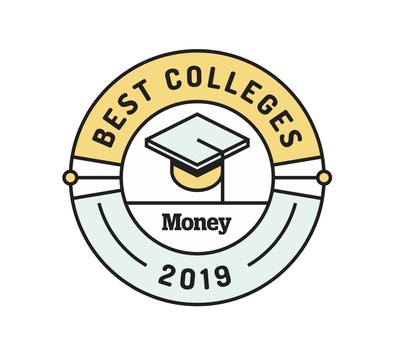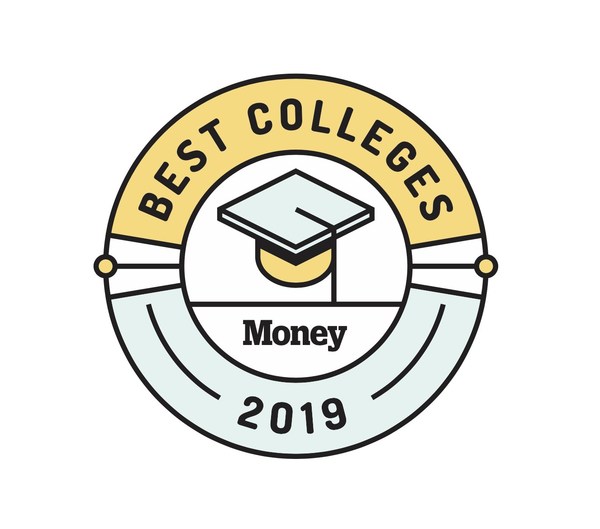News Releases
DES MOINES, Iowa, Aug. 12, 2019 /PRNewswire/ -- Today Meredith Corporation's (NYSE: MDP: Meredith.com) MONEY.com announced its sixth annual Best Colleges for Your Money List with University of California-Irvine landing the top spot, followed by City University of New York-Baruch College and Princeton University, respectively. This comprehensive list showcases a wide variety of schools, ranging from elite colleges and public universities to smaller specialized colleges.

"We are thrilled to announce that this year's list marks the first time a public college has received the number one position," says Editorial Director of MONEY.com and Finance Content Strategy Adam Auriemma. "College is the ultimate investment and our Best Colleges franchise gives us an opportunity to connect with families leading up to one of their most significant financial milestones. Higher education is a hot topic, and with more options than ever, we offer insight into educational quality, affordability and alumni success, and we help guide students in the right direction."
MONEY's Top 10 Best Colleges for Your Money are as follows:
- University of California-Irvine
- City University of New York-Baruch College
- Princeton University
- University of California-Los Angeles
- University of California-Davis
- Stanford University
- Massachusetts Institute of Technology
- University of Michigan-Ann Arbor
- University of California-San Diego
- University of Virginia
Click here to view MONEY's complete 2019 Best Colleges for Your Money list.
MONEY also offers additional features, including Build Your Own Rankings, a tool to personally curate a shortlist, and Popular Rankings, a collection of additional lists for hyper-specific searches.
Highlights from the list are as follows:
- States with the most schools on the list: New York (89), Pennsylvania (68), California (63), Massachusetts (43), Illinois (30) and more.
- Twenty-nine colleges made their first appearance on the list this year: National Louis University (No. 80), CUNY-City College (No. 115), The University of Texas Rio Grande Valley (No. 193), Albany College of Pharmacy and Health (No. 239), Saint Martin's University (246) and more.
- Four colleges made it into the top 50 for the first time ever: California State University-Fullerton (No. 22), California State University-Northridge (No. 29), California State University-Los Angeles (No.36), and Bates College (38).
- Best Public Colleges: University of California-Berkeley (No. 11), California State University-Long Beach (No.13), University of Florida (21), University of Washington-Seattle (No.22), Georgia Institute of Technology (27), and more.
- Most Transformative Colleges: Manhattan College (No. 155), Mount Saint Mary's University (No. 142), MCPHS University (No. 356), University of California-Riverside (No. 12), California State University-Stanislaus (No. 68), and more.
- Best Small Colleges: California Institute of Technology (No. 16), Massachusetts Maritime Academy (No. 25), Washington and Lee University (No.26), Swarthmore College (No. 37), Bates College (38), and more.
- Best Colleges Where More Than Half of Applicants Get In: University of California-Riverside (No. 12), Texas A&M University-College Station (No.18), University of Illinois at Urbana-Champaign (No. 21), California State University-Northridge (No. 29), Virginia Tech (No.34), and more.
Methodology
MONEY's rankings include only U.S. colleges that have sufficient reliable data to be analyzed. Colleges must have a graduation rate at or above the median for their institutional category (private, public or historically black college or university), or they must fall in the top 25% of the value-added graduation analysis. In other words, they must have unusually high graduation rates compared with schools that serve students with similar test scores and socioeconomic backgrounds.
Institutions were screened out if they showed at least two signs of financial difficulties, such as low bond ratings or being labeled as having financial problems by the U.S. Department of Education. MONEY also screened out military academies that require a commitment of service in exchange for free tuition because of the difficulty of estimating the cost of the service commitment.
The remaining 744 schools were then ranked based on 26 factors in the three categories listed below.
1. Quality of Education: 1/3 weighting
The six-year graduation rate and value-added graduation rate account for most of this measure. Graduation rate calculations were adjusted to specifically include the transfer student population at each college. This section also includes a college's student-faculty ratio to recognize campuses where students have more personal time with professors, as well as the number of Pell Grant recipients a school graduates as a way to analyze how well schools support low-income students.
2. Affordability: 1/3 weighting
This category combines both short-and long-term affordability.
- Short-term measures include the net costs that students actually end up paying after receiving aid, the period of time it takes to earn a degree, and the amount of money that students and their parents typically borrow through federal programs.
- Long-term measures center on student-loan default and repayment rates. MONEY balances those factors with its value-added analysis to reward colleges that aid students with lower test scores and family income.
3. Outcomes: 1/3 weighting
Outcomes are based primarily on alumni salary data from PayScale.com and the federal College Scorecard. MONEY includes a value-added analysis of the PayScale earnings reports, accounting for the socioeconomic background of the student body and the mix of majors. Finally, the share of students who are unemployed or are earning less than the average high school graduate six years after they enrolled in college is also considered.
ABOUT MONEY.COM
MONEY is a multi-platform source of personal stories, candid conversations and useful information about money and the way it affects our lives. With a nearly 50-year legacy of providing trustworthy advice on every aspect of personal finance, MONEY helps its readers lead a richer life—in every sense of the word. Signature franchises include Best Colleges and Best Places to Live, an aspirational guide to the towns and cities around the country that provide the best launchpad for your family's overall well-being. Find us at MONEY.com.
ABOUT MEREDITH CORPORATION
Meredith Corporation has been committed to service journalism for more than 115 years. Meredith uses multiple distribution platforms—including broadcast television, print, digital, mobile and video—to provide consumers with content they desire and to deliver the messages of its advertising and marketing partners. Meredith's National Media Group reaches more than 190 million unduplicated American consumers every month, including over 90 percent of U.S. millennial women. Meredith is the No. 1 magazine operator in the U.S. and owner of the largest premium content digital network for American consumers. Meredith's Local Media Group includes 17 television stations, reaching 11 percent of U.S. households.

SOURCE Meredith Corporation

